Overthinking on Autopilot: Is Worry Becoming a Habit Loop?
When your mind just starts replaying “what if” over and over again, you see it becomes a pattern, not just any mental weakness. According to researchers, worry and rumination are both described as part of a single process called Repetitive Negative Thinking (RNT), which underlies both depression and anxiety. In simple words, your mind learns to get stuck in a loop [1].
However, The Good News is that you can easily break this cycle by using a quick 60- to 90-second ACT-based defusion exercise, which is designed to break the loop as soon as it starts, along with an explanation of the science behind why it’s helpful.
Is Worry actually a Habit?
Anxious thinking has been described as a habit loop by many clinicians. If we unfold it, we can see that there is a trigger, followed by a worrisome thought, and in that instance, for a brief moment, you feel some relief, as though you’ve gained some sense of safety control. This temporary relief helps you realize that worrying is something that works for you, in turn reinforcing the cycle, which is also known as reward learning in behavioral science. Your mind starts repeating what it feels like being rewarded. However, when it comes to worry, that reward does not bring lasting peace of mind; it’s merely a momentary reduction in uncertainty. As that momentary relief goes away really quickly, your mind starts to crave for another loop, and here the cycle keeps getting strengthened and continues [2] [3]
The above explanation closely aligns with research on (RNT). Studies increasingly view worry and rumination as two expressions of the exact underlying mechanism rather than seeing them as separate processes. RNT is now viewed as a transdiagnostic factor, like a mental habit that cuts across conditions such as depression and anxiety. Furthermore, it not just predicts your emotional distress but plays a crucial role in maintaining it, which further helps explain why people remain stuck even if they try to think out of their worry [4].
Why “Collect More Info” Rarely Frees You
When your mind views uncertainty as dangerous, it’s a natural human response to go for certainty, e.g., googling your symptoms, rechecking policies, or getting reassurance from texting friends. That may soothe the discomfort for the time being, but the very fear of uncertainty that makes us search for answers is also what keeps the worry going. Every new piece of information hardly settles your mind for a long time; instead, it makes you more curious with more questions, more doubts, and then more checking. This way, ‘more input’ just keeps feeding the loop rather than closing it, where worry becomes your only option [5] [6].
The 60–90-second **Defusion Interrupt
The Goal is to change the relationship with your thoughts, according to ACT, known as cognitive defusion. Then take a small value-based action.
- Catch the Exact Sentence. First thing is to write down the thought that keeps looping in your head, “What if I messed up that email?”
- Add the Defusion Prefix. The next thing is to add this prefix: “I’m having a thought that, what if I messed up that email?” This tiny little shift turns your thought into simple text from some unquestionable truth. Something easily noticeable without following automatically. According to research, doing defusion for a brief time also shows results, and thoughts feel less emotionally charged [7].
- Read It Once, Slowly. Here, you see you’re just giving your thought a label for what it is, not correcting or debating with it.
- Take one tiny, values-based step (≤2 minutes).
- If you value learning, just write down one small improvement for the next time.
- If you value reliability, then instead of being stuck in worry about the email, you could take one small action right away like sending a short clarification message (e.g., “Just to confirm, the report I sent is the latest version”).
- If health is what you value, then just stand up for like 60 seconds.
What we just did is mindfulness in action with ACT: where you first noticed, then defused, and then took the valuable action. ACT strengthens psychological flexibility, which is the ability to keep choosing valued actions even in the presence of a noisy mind. This is supported by large clinical trials and meta-analyses.
Micro-scripts for Common Overthinking Triggers
- Social replay:
“I’m having the thought that everyone noticed my awkward joke.”
Instead of running the scene in your head on repeat, take one small grounding action. Send a simple thank-you DM, or set a reminder to follow up with that person tomorrow. One action is enough, the goal is to avoid ten reassurance loops and choose one clear response. - Work perfectionism:
“I’m having the thought that one typo ruins my credibility.”
Worry pushes you to polish endlessly, but reliability does not ask for perfection. You can send a good enough draft for now, and then log a note for improvement for next time. This changes your energy from non-stop checking to continuous learning. - Future catastrophes:
“I’m having the thought that if this goes wrong, everything collapses.”
The whole future starts to feel overwhelming with such catastrophic thinking. The solution is to focus on your next controllable action, such as sending an email or making a short call. Taking a tiny step forward helps reintroduce a sense of agency and prevents you from spiralling. - Late-night loops:
“I’m having the thought that I can’t sleep unless I solve this.”
The prime time for mental loops is usually nighttime. You can write down the bothersome worry on your tomorrow’s list instead of thinking and forcing yourself for a solution at 2 a.m. This will help give your brain the signal that you have noted the problem, and you can work on it later. Solving is not the primary purpose here; it’s just about unhooking, allowing you to take a rest for a long time.
These micro-scripts serve as a reminder that you don’t need to control every thought. The only thing you need to do is choose your response. According to research on psychological flexibility, this mere shift from controlling to choosing is what reduces the non-stop repetitive thought patterns.
Why defusion works (the short science bit)
It helps de-power the thought. Classic lab studies (e.g., Masuda et al.) have shown that defusion techniques reliably reduce both the believability and the emotional discomfort of self-critical thoughts, often within minutes [8] [9].
It targets the right thing. The goal is not to look for the perfect thought, but rather defusion helps in building psychological flexibility. This is the ability to focus and act on your values even when your mind feels noisy. According to research, this has been identified as a central change mechanism over dozens of ACT trials [10] [11].
It Interrupts the Habit Loop. Worry usually runs on a trigger, like something triggers your anxiety – a worrisome thought appears – and you feel a sense of relief. This relief keeps your mind repeating this sequence. Here, defusion works by breaking this chain, and the mind learns not to feel ‘rewarded’ for worrying. Over time, the grip on this cycle starts to loosen.
A One-Week “Anti-Loop” Plan
- Mon–Tue: You can practice the Defusion Interrupt once each day on your most significant or most recurring worry. The goal is simply to notice and label the thought, not to eliminate it.
- Wed–Thu: After practicing the defusion interrupt, try adding a quick 2-minute values-based action (e.g., sending an email, scheduling an appointment, filing a document, or tidying a space). This will directly link defusion towards something you want to do.
- Fri: Now you can review by looking back on the whole week and notice which thoughts lost the most believability and emotional charge. Just keep in mind you are measuring the skill, you’re not aiming for perfect streaks.
- Weekend: You can teach this defusion prefix to someone you know, like a colleague or friend. Teaching it to someone will help you strengthen your own habit of unhooking and reinforce your learning.
Now Try It In MetaMindful
Open the Defusion Session → Habit-Loop Breaker. In only three minutes, you’ll:
- Capture the exact worry line your mind is looping on,
- Convert it with the prefix “I’m having the thought that…”,
- Log one small, values-based action you can take right away.
Remember, the aim isn’t to delete or silence your thoughts. Real change comes from unhooking fast enough to save your energy for what feels important to you.




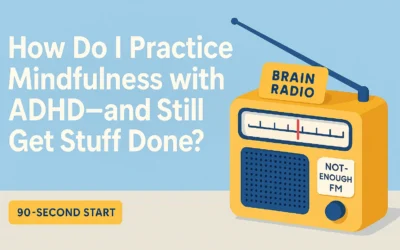

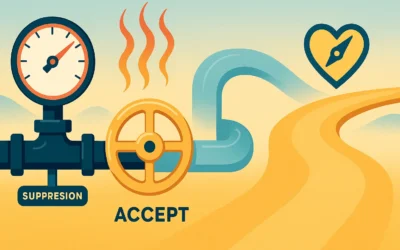
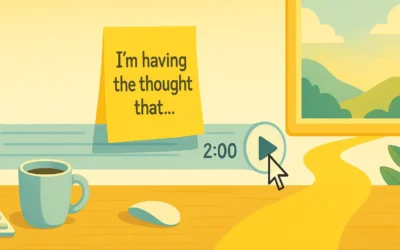

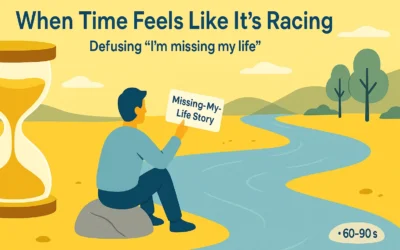
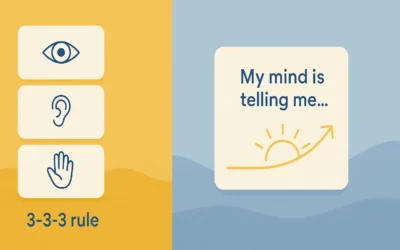


0 Comments